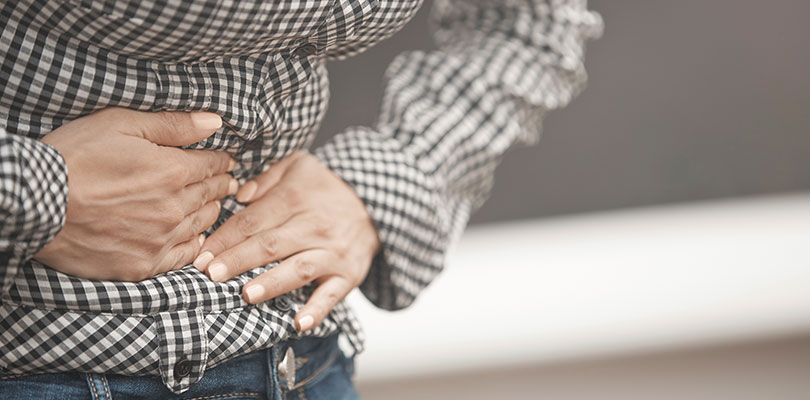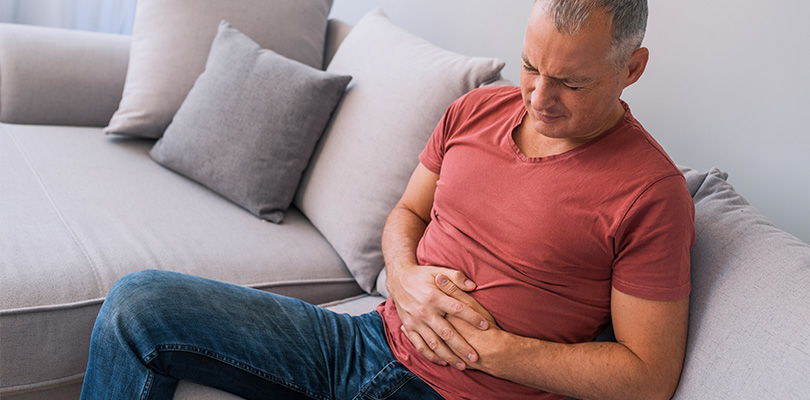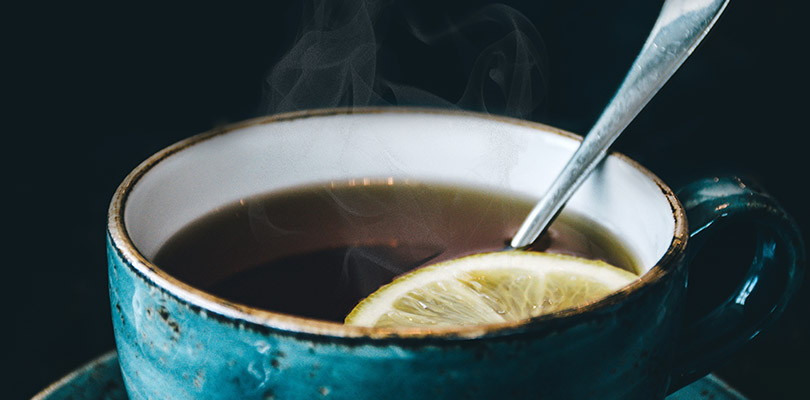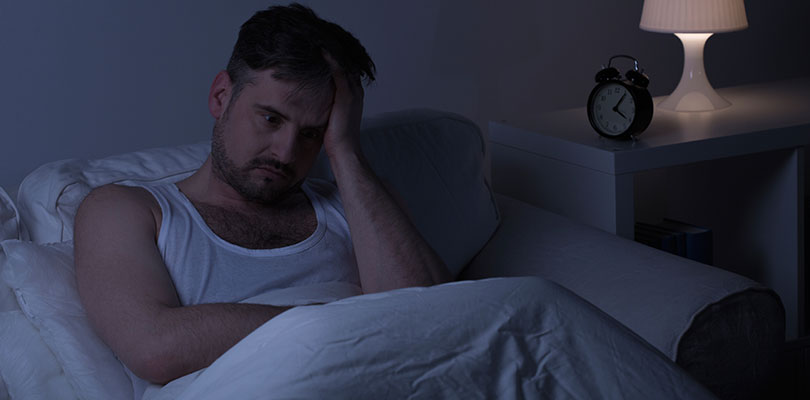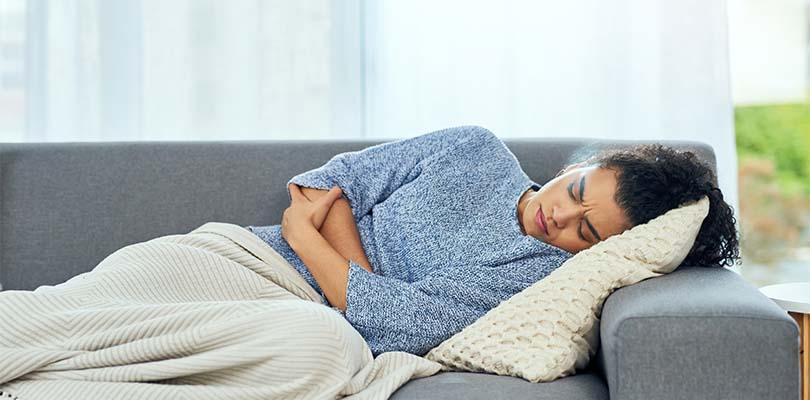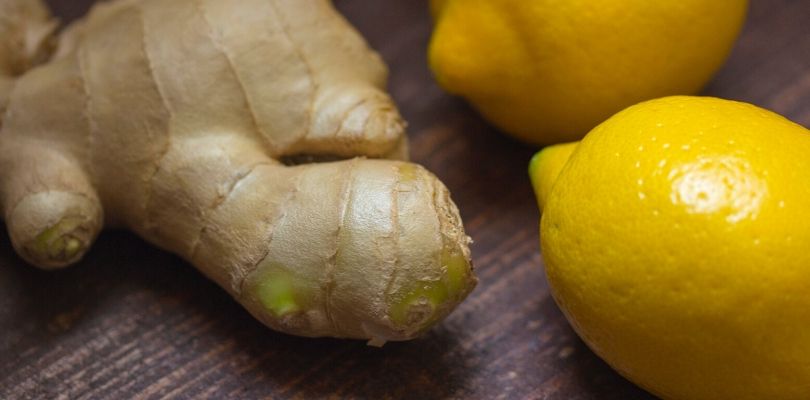Photo Credit: Zhenikeyev / iStockphoto.com
Types of IBS Pain and Your Best Bet for Relief
When people think of irritable bowel syndrome (IBS), they tend to think of embarrassing bodily functions and urgent bathroom episodes, but that’s only part of the picture. In fact, IBS pain is just as difficult to handle as the other unsavory symptoms.
Some pain can be particularly challenging to treat, and the cramping, aching pain of IBS certainly falls into that category. It can be unpredictable and ever-changing. The way you would treat a sprain, wound, or other painful injury probably won’t work here — the discomfort is deep, and you’ll have to get to the root of the matter before you can get relief.
Once you pinpoint your pain and trace it to a specific IBS symptom, you can choose a precise approach to deal with it. Don’t give up on your body; learn to use your muscles, mind and breath to restore comfort and control.
Common Types of IBS Pain
Pain is individual and it comes in many forms. For some, IBS causes deep, crippling cramping, while other people feel sharp pains that move around their abdomen. You may find certain foods, activities or flare-ups bring on one sort of pain more often.
IBS symptoms are unpredictable by nature, but the pain does tend to come in certain patterns. Often, the type of pain and where you feel it will depend on if you’re prone to constipation or diarrhea (or both).
Bloating Pain
Generally, this sort of pain occurs in the upper abdomen and tends to get worse after meals. It is a hallmark of chronic constipation and often comes with gas as well. Certain foods that tend to produce gas — cruciferous veggies, onions and beef, for example — will probably make the pain worse.
Cramping Pain
Cramps tend to hit the middle of the abdomen, right around the belly button. They come when your intestines struggle to digest your food, contracting more severely or more frequently than usual. Some people find this cramping pain gets worse when their bowel movements change (in frequency or density).
Lower Abdomen Ache
Pain under your belly button can manifest as a deep ache, often with an urgency to use the toilet. This pain is typical for IBS sufferers prone to diarrhea, and in many cases, will subside after a bowel movement.
Of course, not all pain fits so neatly into these categories. For instance, it’s not uncommon to feel tenderness all over your abdomen, or a stitch in either side. Sharp or stabbing pain that comes and goes could be muscle-related or triggered by gas (as it moves and puts pressure on your intestines).
Manage Your Brain to Manage the Pain
IBS and gallbladder problems have very similar symptoms. They may be separate issues, but there is evidence that suggests a link between the conditions.
The connection between your brain and digestive system is stronger than you may imagine.
In fact, there are more nerve cells in your stomach and intestines than in your spinal cord, and they are constantly receiving and relaying messages back to the brain. It follow that whatever impacts your brain, impacts your gut.
While careful food choices and eating patterns will help manage your IBS, keeping a calm and happy mind can do wonders for your abdominal comfort. The idea is to stop the nerves in your digestive system from overreacting. Activities that help you calm your mind and your muscles at the same time may bring even greater benefit.
Yoga Poses
Yoga is a great practice for so many reasons, and while there are hundreds of useful poses for building strength and flexibility, certain postures are particularly good for relieving the pain and pressure of IBS. Linking these postures together will provide rhythmic compression and stretching that can stabilize the sensory receptors in your digestive tract. The result? Better intestinal function and a calmer bowel.
Here are some recommended poses for the more common symptoms:
- Constipation: Forward bend and fish pose
- Diarrhea: Spinal twists and seated forward bend
- Bloating: Wind relieving posture and a seated wide angle pose
- Backache: Bridge pose and cat pose are known to help
Corpse pose (shavasana) is exceptionally relaxing, and an important posture to include whatever your specific ailment. Learning to let go of your thoughts and bring awareness back to your body tackles both psychological and physical stress.
No matter which pose you happen to be in, remember to breathe in and out slowly, deeply and evenly. Some instructors describe it as breathing “into” the posture, using your breath to stabilize your thoughts and open up your muscles and joints. Inhale and exhale through your nose to slow your breath and stay focused.
Progressive Muscle Relaxation
Tensing and relaxing each muscle group can bring you into a deep state of relaxation, relieving pain and tension. The idea is to isolate muscles and treat them individually, and while it can take some time to work through your whole body, it’s well worth your patience.
You might find it easier to lay down rather than sit upright when you do this exercise, since you won’t have to worry about holding your body up. Working from the top of the head to the base of your feet, begin to contract and relax each small group of muscles, holding the contraction for a few seconds, and always breathing deeply into your belly. By the time you reach your toes, you should feel a profound sense of calm.
Soothing Supplements and Medication
Certain herbs can bring you some relief, too. Peppermint is the leader of the pack, with its proven ability to relax the digestive system and calm the stomach.
A mug of peppermint tea can soothe your tummy after a meal, or really at any time of day. If you need something a bit stronger, try peppermint oil capsules.
The health benefits of turmeric have been stacking up in recent years, from disease-prevention to healing power. Turmeric also appears to calm muscle contractions and inflammation in the intestines, which can be incredibly helpful for IBS. The spice can be used in all sorts of dishes, and the powder also comes in capsule form.
Medication can’t cure your IBS, but it can make the symptoms easier to handle. If painful cramping is interfering with your daily life, you may want to try an antispasmodic: these types of drugs target the smooth muscle lining of your intestines, relaxing them and preventing painful contractions.
